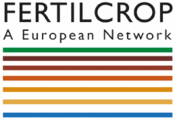Project info

Fertility Building Management Measures in Organic Cropping Systems– FertilCrop
Funding: CORE Organic Plus Funding Bodies, being partners of the FP7 ERA-Net project CORE Organic Plus.
Project coordinator: Dr. Andreas Fliessbach, Research Institute of Organic Agriculture FiBL, Switzerland
Deputy coordinator: Dr. Jørgen Olesen, Department of Agroecology - Climate and Water, Aarhus University, Tjele, Denmark
Duration: 2015–2017
Aims and hypotheses of the FERTILCROP project
The overall aim of FertilCrop was to develop efficient and sustainable management techniques aimed at increasing crop productivity in organic farming systems.
To achieve this, the mutual interactions of crop plants with weeds and co-cultivated plants, with soil macro- and micro-organisms in their physically and chemically determined environment influencing C and N pools and fluxes as well as greenhouse gas (GHG) emissions were studied. Top soil layers with increased fertility supporting crop growth may result from reduced soil tillage, increased inputs of organic matter, green manures, and animal manures, and often they are found in orchards and vineyards that are tilled only superficially.
Twenty field experiments along a South West to North East transect across Europe on fertility inputs such as green manure (10) and animal manure (7), on soil tillage (7) and crop rotations (7), and on whole farming systems (5) provided historical data on crop and soil performance built into a database in work pacckage 5.
These were related to new data from case studies on weed dynamics (work package 2), macro-organisms and their influence on soil structure (work package 3), the community and function of soil microorganisms (work package 4), and the dynamics of C and N pools and fluxes (work pacckage 5). Historical and new data from work packages 2-5 were used to calibrate C and N models (work package 6) and to feed on-farm prototyping exercises and to assist with management decisions and strategic fertility planning in cooperation with farmers (work package 7). All work packages produced inputs to work package 7 by developing simple science based tools for practical applications
The specific objectives of FertilCrop were:
- i. to investigate the interaction of weeds, green manures, and crops in time and space.
- ii. to evaluate the modulating role of soil structure and porosity in stratified soil layers on crop and root growth, nutrient uptake and losses as well as aeration
- iii. to identify, analyse and improve the understanding of plant-microbe interactions in stratified soils.
- iv. to quantify and review changes in C- and N-stocks and the dynamics of fluxes.
- v. to calibrate existing models on C- and N-dynamics and crop growth for fertility building practices.
- vi. to parameterise a strategic planning model for crop rotations with respect to fertility management.
- vii. to develop and test with farmers tools and approaches to aid recognition of soil fertility.
Hypotheses
Interactions of crops with weeds, soil organisms and green manures in organic conservation agriculture systems will improve soil structure and nutrient use efficiency, reduce losses, and stabilise crop yields.
- Soils with more stratified organic matter, porosity, and biological activity, such as those under reduced soil tillage, provide fertile topsoil layers that are more favourable to crop growth than ploughed soils.
- Models simulating cropping system effects on the soil C- and N-cycle help improving farm level decisions and soil fertility planning, if co-developed by researchers, advisors and farmers.
- Participatory prototyping of OF systems permits farmers to learn about research innovations and researchers to reflect on the adaptability of their scientific findings to real farm conditions.
 This website was archived on January 11, 2020 and is no longer updated.
This website was archived on January 11, 2020 and is no longer updated.
